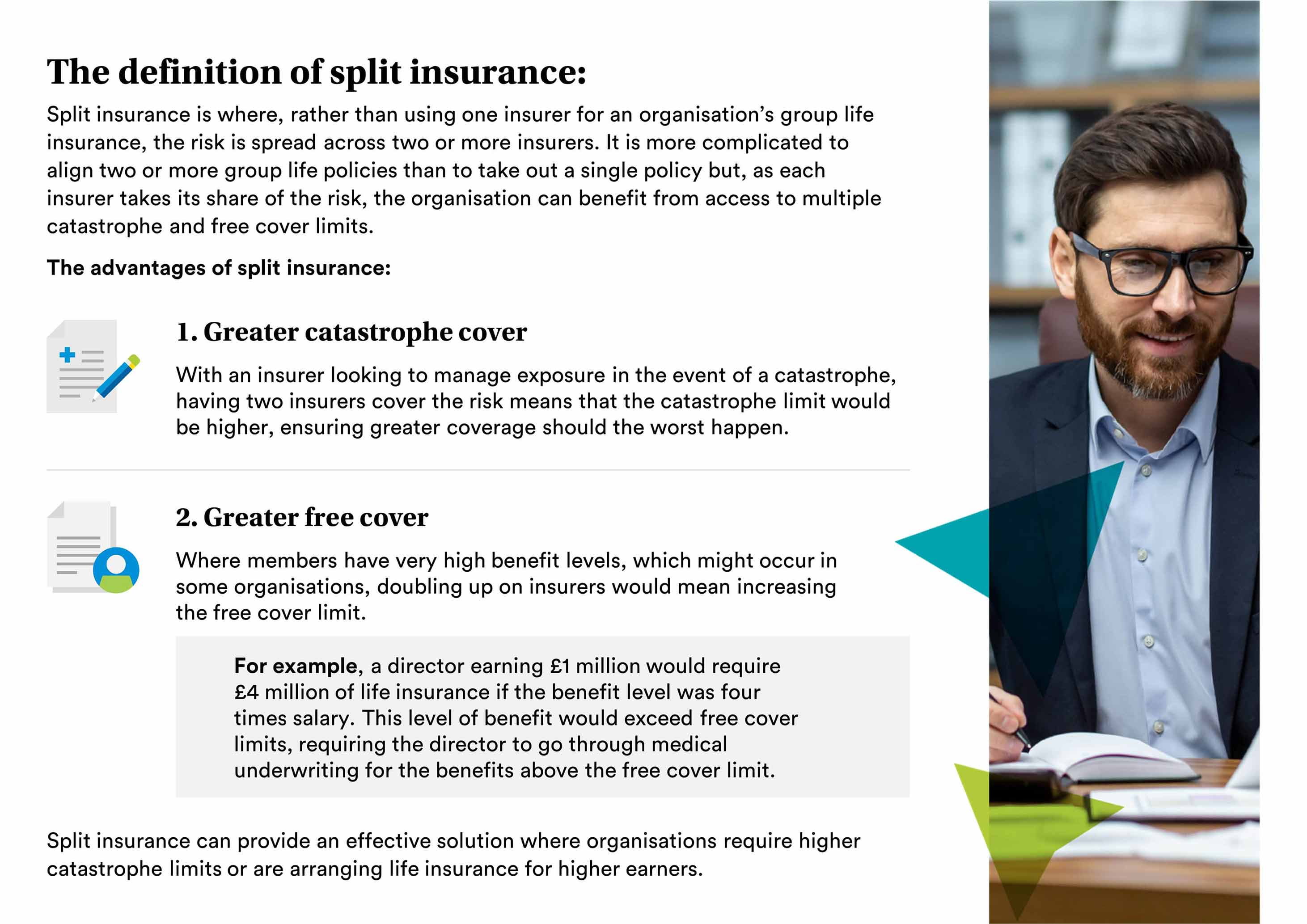Risk
Summary
- Why would customers benefit from two insurers providing cover? In this article we take a look at split insurance, why it happens, and what it means for customers.
Market knowledge and experience enables advisers to recommend the most appropriate insurer to a client.
But, in certain situations, an organisation may reap even greater benefits if their cover is split across more than one insurer.
Split insurance definition
Split insurance is where, rather than using one insurer for an organisation’s group life insurance, the risk is spread across two or more insurers. It is more complicated to align two or more group life policies than to take out a single policy but, as each insurer takes its share of the risk, the organisation can benefit from access to multiple catastrophe and free cover limits.
Split insurance can deliver advantages to clients in a couple of different ways.
More catastrophe cover
Catastrophe limits are included on group life policies to help insurers manage their exposure in the event of a catastrophic event such as a terror attack or a major industrial accident. Generally, a catastrophic event is defined as one originating event, accident, cause, occurrence or incident or a series of related originating events, accidents, causes, occurrences or incidents, that directly or indirectly results in the deaths of more than one insured member, irrespective of the date of those deaths or the period of time or area over which the originating events, accidents, causes, occurrences and incidents took place. Each insurer may have differing definitions though so it’s worth checking their terms and conditions.
Although catastrophic events are rare, where the limit is lower than the total sum insured, an organisation would face a shortfall if the worst does happen.
For example, an organisation has a group life insurance policy with a total sum insured of £500 million for its office in the City.
The catastrophe limit on the policy is £300 million, meaning this is the maximum total an insurer will pay out to the trustees for all claims resulting from the catastrophic event. Therefore, it faces a potential shortfall of £200 million if an event occurred in which a claim was submitted for every employee.
This is a significant shortfall so the organisation could consider splitting its group life insurance between two insurers, with each covering half of the total sum insured. As well as having the same level of cover for employees, the organisation would benefit from each insurers’ catastrophe limits.
If these were both £300 million, it would have a total limit of £600 million and the reassurance that all claims would be covered if there was a catastrophic event. That said, a client should consider the likelihood of whether they need everyone covered if it’s unlikely all employees would be in one location at any one time, taking into account factors like working patterns, holiday, and sickness.
More free cover
It may also be worth considering split insurance where an organisation has members with high benefit levels.
A director earning £1 million would require £4 millions of life insurance if the benefit level was four times salary. This level of benefit would exceed free cover limits, requiring the director to go through medical underwriting for the benefits above the free cover limit.
Split it across two insurers, with each insuring £2 million of the total sum insured, and, depending on the number of employees covered within the organisation, the director would have two free cover levels, potentially double what a single insurer would have offered.
This could make it possible to dip within the free cover limits, saving the director – and the insurers – the hassle and expense of medical underwriting.
Split insurance can provide an effective solution where organisations require higher catastrophe limits or are arranging life insurance for higher earners.
However, as insurers have different rates and terms, it can be more complex to align two or more policies than to take out a single policy.
Where the benefits outweigh the additional administration requirements, it is an option that can work well for organisations.

